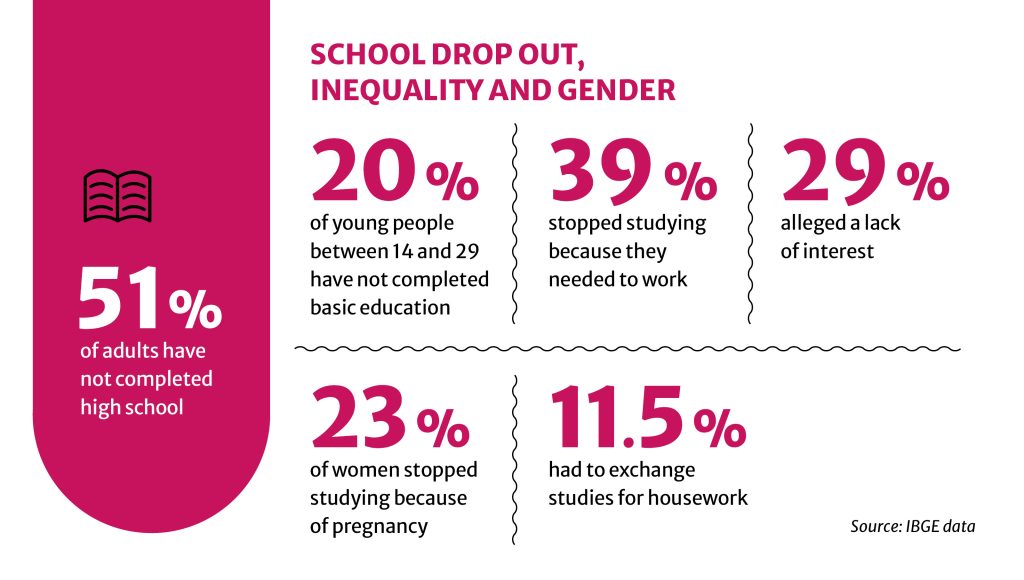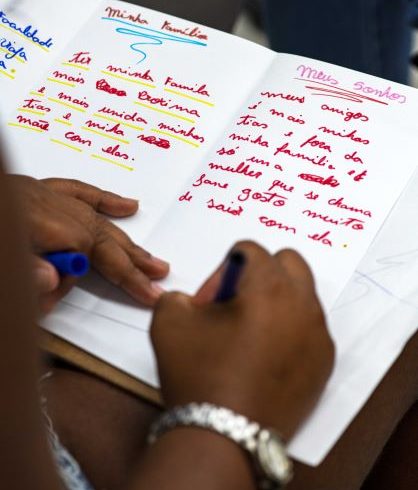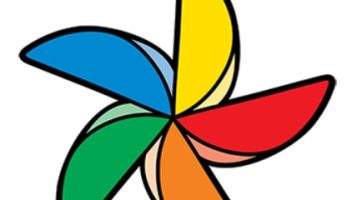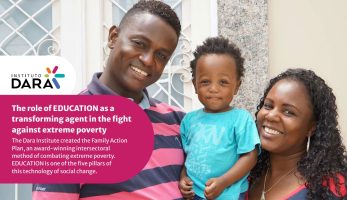“If education alone does not transform society, without it neither does society”, wrote educator Paulo Freire. At the Dara Institute, Education, one of the five components of the Family Action Plan (PAF), is the driver of change.
One of the first things that the a family assisted by Dara needs to do is to provide proof their children are enrolled in a formal educational center of learning. For the family service to be carried out and completed, children between 4 and 17 years old must be at school, a requirement of the Child and Adolescent Statute (ECA) that is voluntarily implemented and verified by the Dara Institute.
In addition to monitoring school attendance and performance, our team encourages the direct participation of parents in their children’s education. The family is usually encouraged to find out and provide this information, but there are cases where Dara contacts the school directly to try to solve problems. Professionals in the area of Education, however, make it clear that this role is the charge of the family itself, stimulating the development of affection with the child and curiosity about their needs.
In parallel, parents are encouraged to return to their studies. Most of the adults responsible for families were forced to leave school early for various reasons, including the need to contribute financially to household income. For women, unplanned pregnancies, responsibility for domestic activities and abandonment of the child’s father even before the child’s birth also weigh.
We showed that it is possible to start over, and the biggest incentive is that the chances of earning more go up considerably having completed a high school education. According to the United Nations Educational, Scientific and Cultural Organization, Brazil is one of the ten countries with the highest number of illiterate citizens in the world. There are 13 million young people and adults over the age of 15 who cannot read or write.

Why is the child not in school?
For families in situations of extreme vulnerability and social fragility, our target audience, there are several reasons children either drop out of school or cut classes. A survey by the organization Todos pela Educação (Education for All) showed that, in 2021, 244,000 young people between the ages of 6 and 14 were not in school, the highest number in six years.
It is not uncommon to hear that the same thing happened to their parents and parents’ parents. Misery punishes in cycles. Our role is to provide tools for them to break these barriers down and buck the trend.
In the meetings with families, we noticed that the most common problems related to dropping out of school are the distance from the school, generally a long way from the families’ homes, who have no money to pay for travel expenses; the parents’ difficulty in taking and picking up their child from school due to their working hours; and having a disabled family member who requires exclusive attention from the responsible adult.
All these problems can and need to be solved, often with the help of professionals from other areas of the PAF, by making families aware of the importance of school-age children and adolescents staying in school and adults returning to school activities. In addition to opening up better opportunities in the job market, adults serve as an example and incentive for younger people. There are several ways we play our part, such as helping in the search for schools closer to home or adjusting the family’s schedule so that it is possible to guarantee and balance the child’s school routine with other needs.
Education and access to the labor market
The main argument for adults going back to school is to increase the chances of getting a good job and thus improve the family’s income. The high school graduation certificate is a basic requirement for many public tenders and for jobs with higher salary expectations in the private sector.
According to data from the Anísio Teixeira National Institute of Educational Studies and Research (Inep), of the Ministry of Education, the number of enrollments in Youth and Adult Education (EJA), popularly known as supletivo/supplementary, has gradually fallen in the country, from a peak of around 5 million in 2007 to 3 million in 2020.
When education provides a bridge to a better job to help increase family income, it becomes easier to create a culture of studying in the family served. And adults end up becoming an example of the transformative power of knowledge for children. It is, as the pedagogues and other professionals and volunteers in the Education area have repeatedly said, “a trickle down effect”.
And it’s never a simple process. But the result is rewarding and has a positive impact not only on income but also on the self-esteem of the entire family.
Returning to school in practice
One of the first steps is to make families aware of the need to complete their studies and then guide them to theYouth and Adult Education centers (EJA) in the public school system. Even parents who already understand the benefits of going back to school often don’t know where to start. Dara provides them practical guidelines that help them to get back to school:
- look for the Youth and Adult Education centers in the schools closest to home;
- collect the necessary documentation for registration;
- take the documents in and complete the registration;
- create a study routine, even if it’s only for a short time at first;
- take this return to education as a commitment that will have an impact on the lives of the whole family.
Certificates and skills for the job market
With the routine established and studies underway, getting a certificate of completion of elementary or high school is closer to reality, as well as developing the skills required in the job market are of paramount importance. The Dara Institute offers the following projects to support families on these fronts:
Study group: to support those who are not of school age to obtain the certificate of completion of primary and secondary education, Dara provides support and encouragement. The study group systematically reviews the entire content of the National Exam for the Certification of Youth and Adult Skills (Encceja) using messaging apps.
Connected: offers digital inclusion and the basic application courses required in professional curricula. The project’s audience is young people between the ages of 15 and 29 who have not had the opportunity to learn how to use a computer.
The most recent initiative encourages those who have already obtained the high school graduation certificate to go one step further, providing information about the National High School Exam (Enem), which is the gateway to public and private universities, the Cederj Consortium, which brings together public institutions in Rio de Janeiro with the aim of democratizing access to higher public education using Distance Learning (EaD) and scholarships at private universities.
Array



